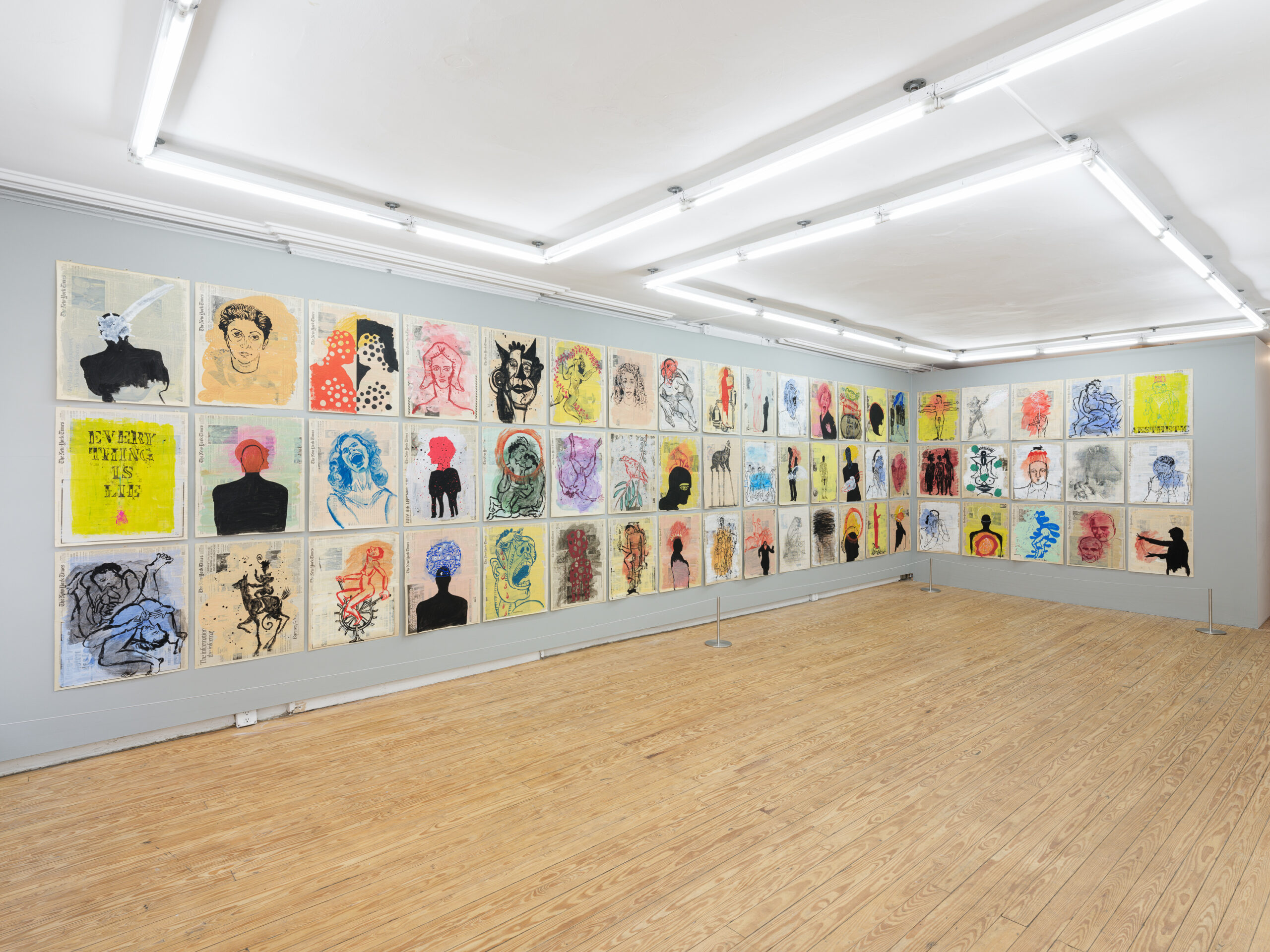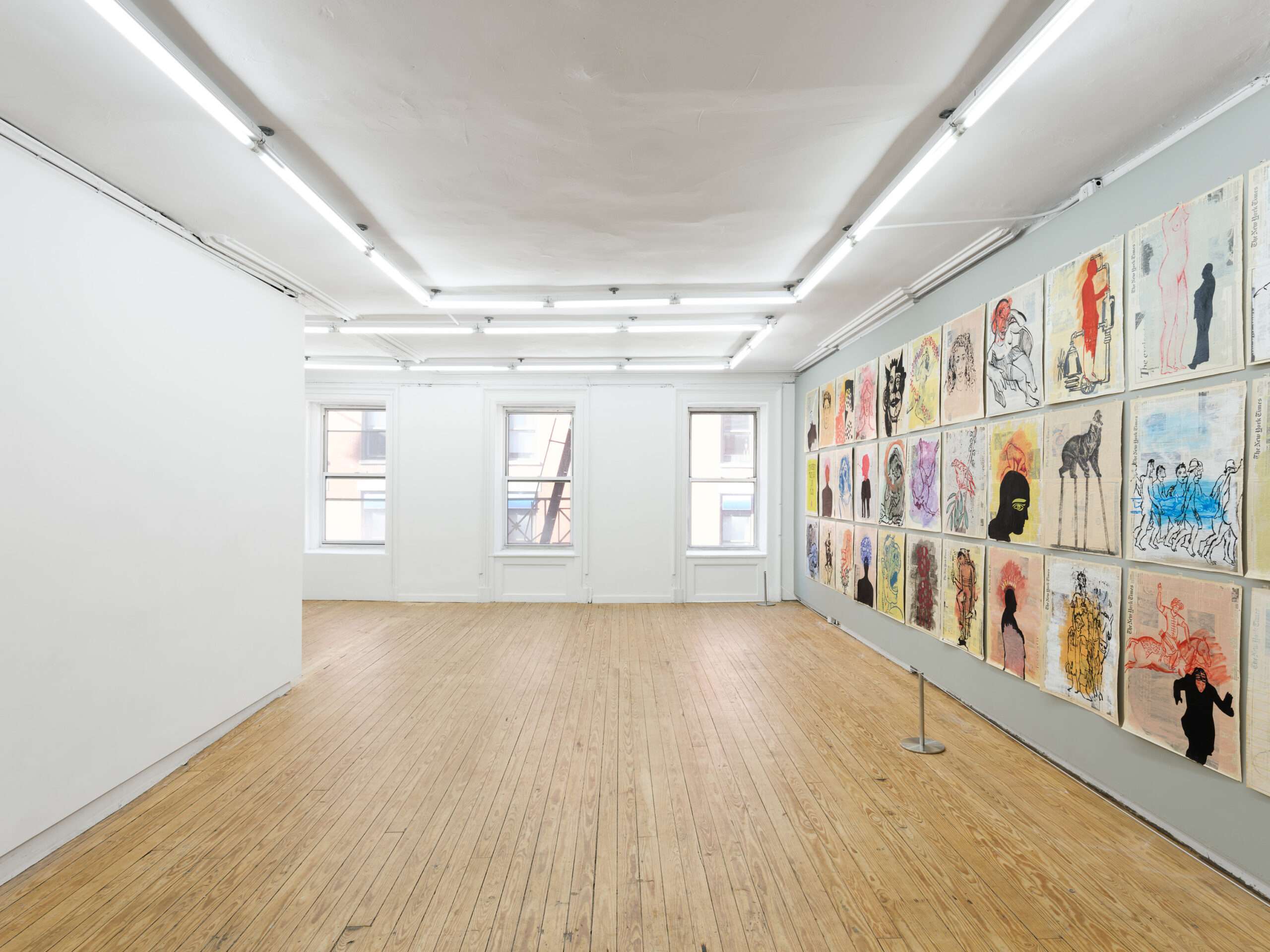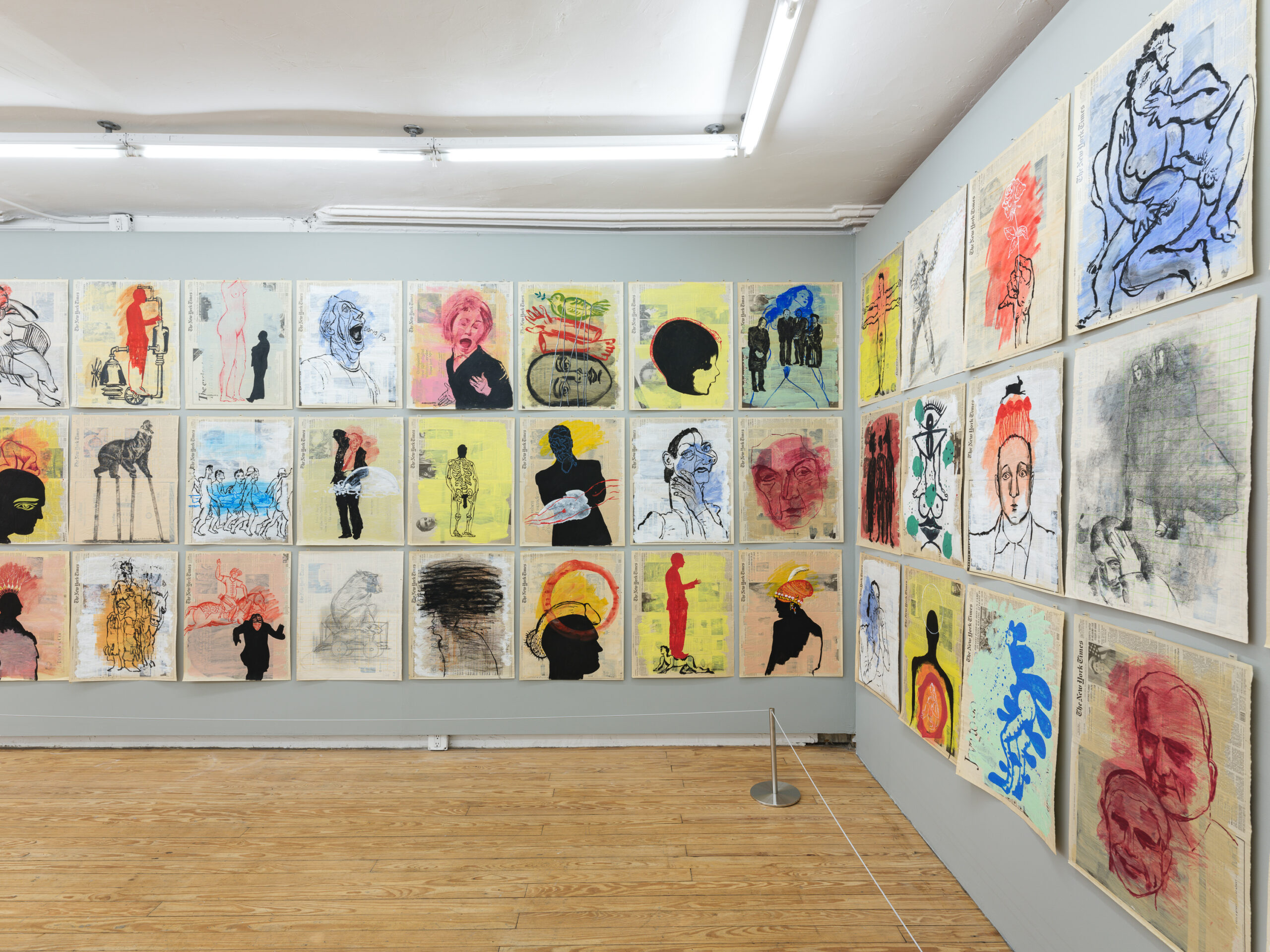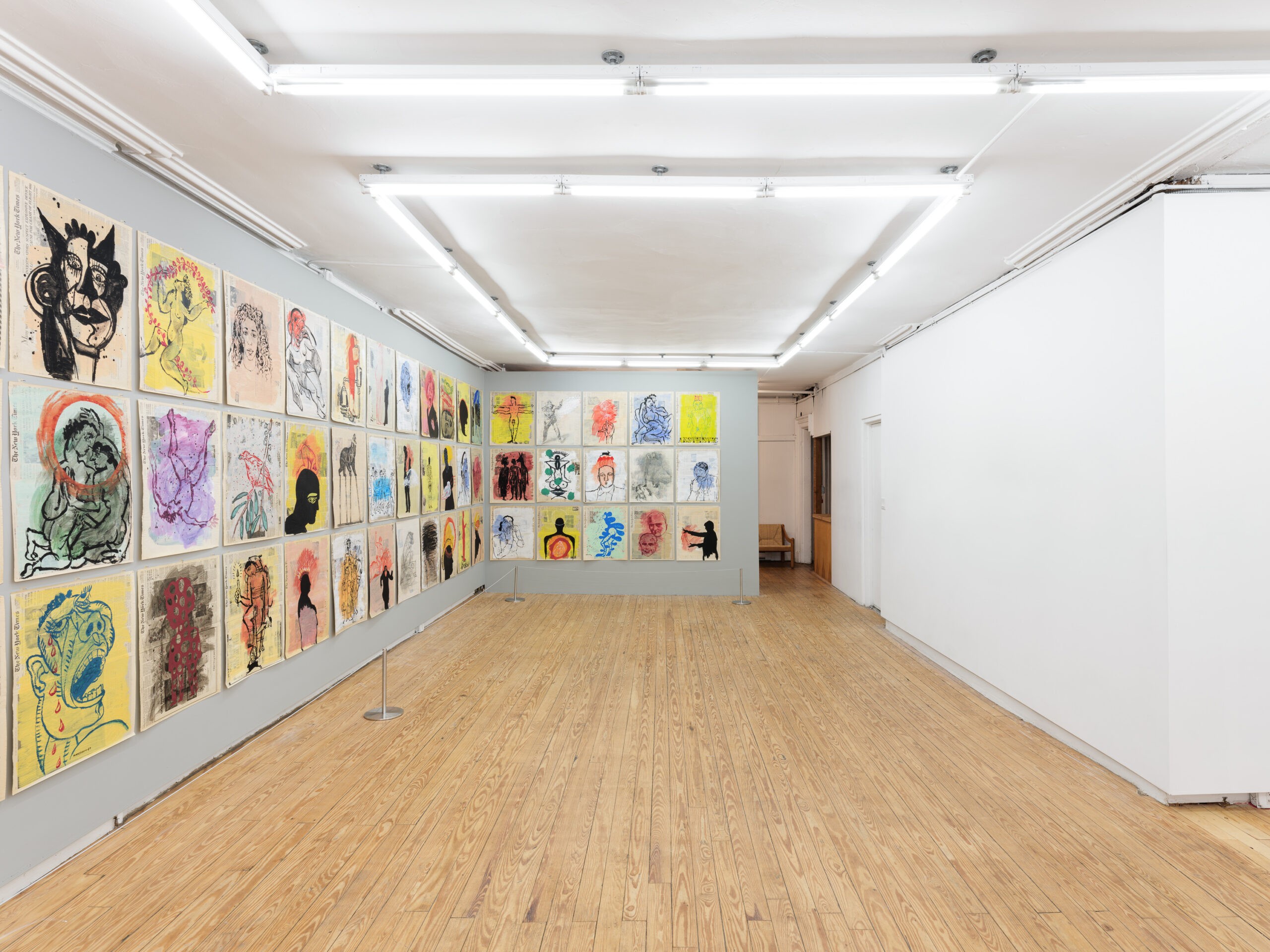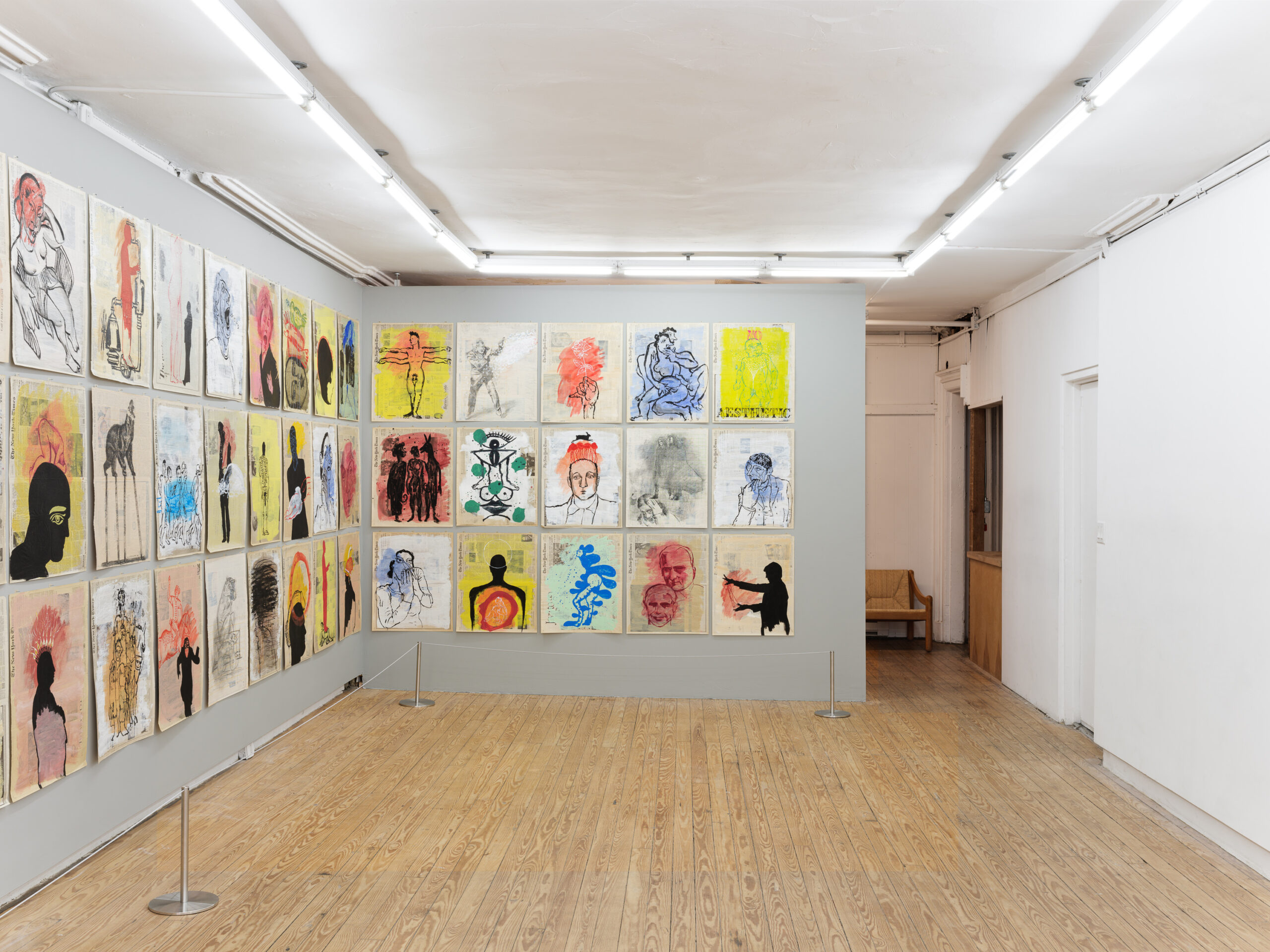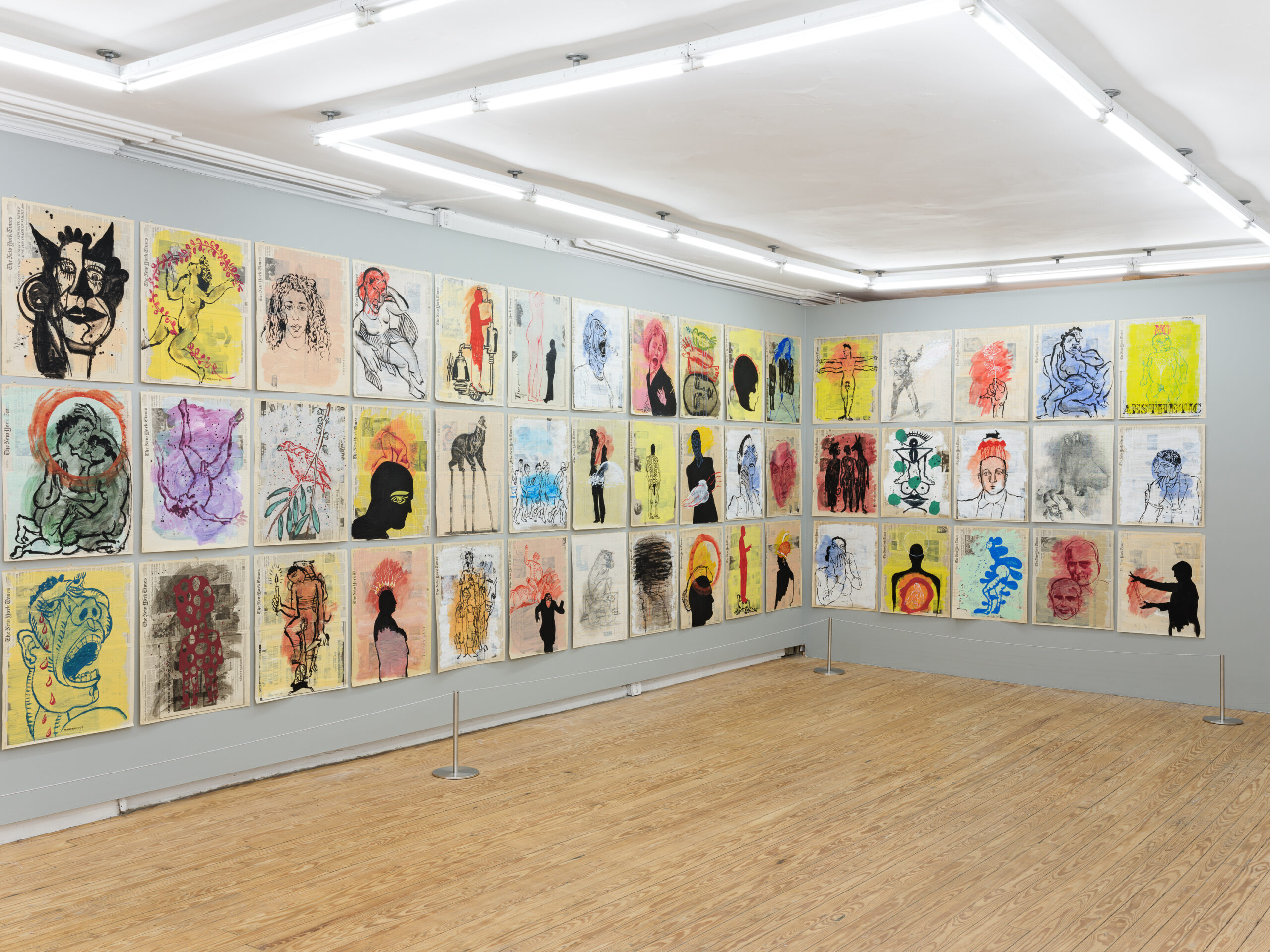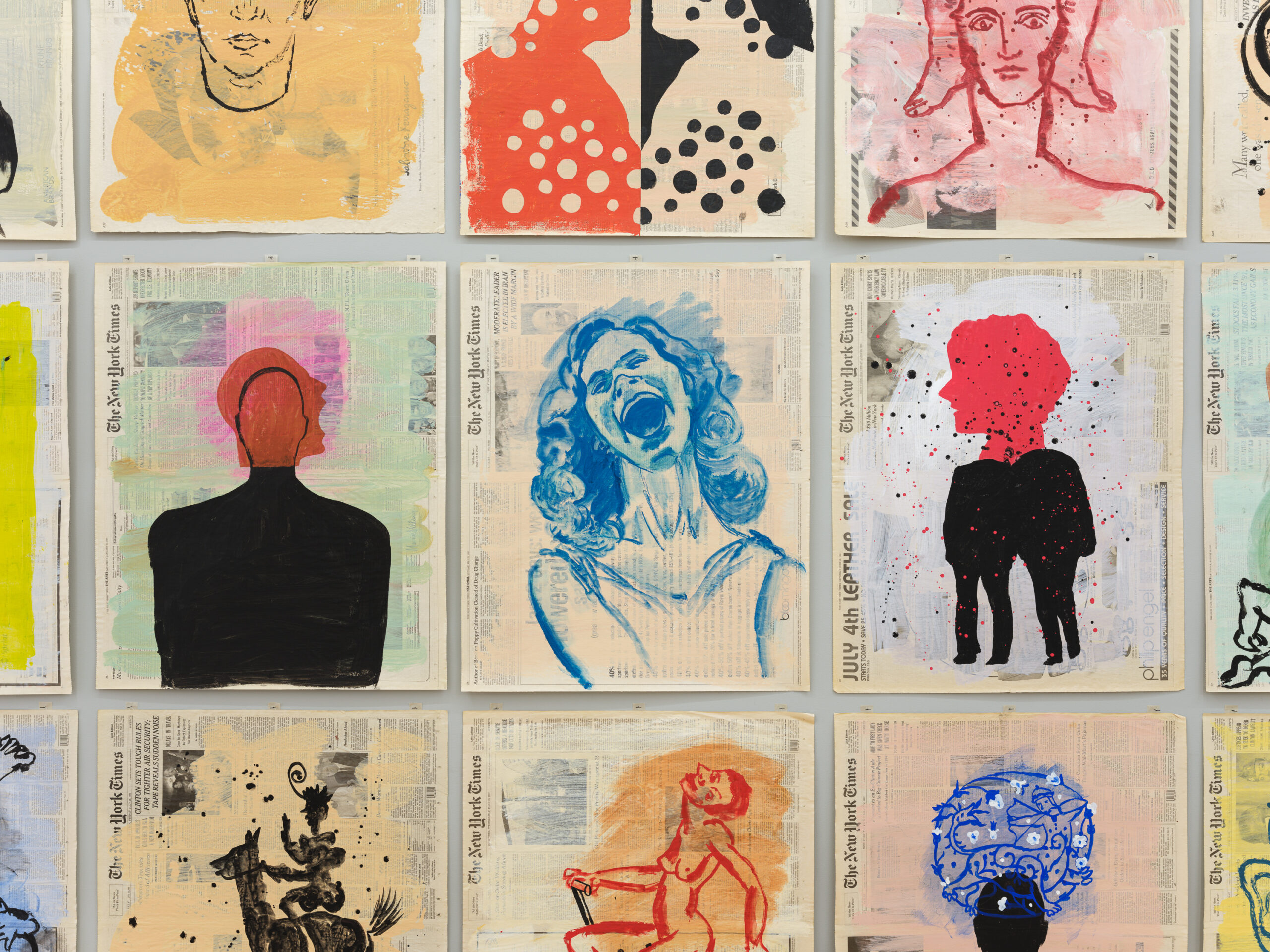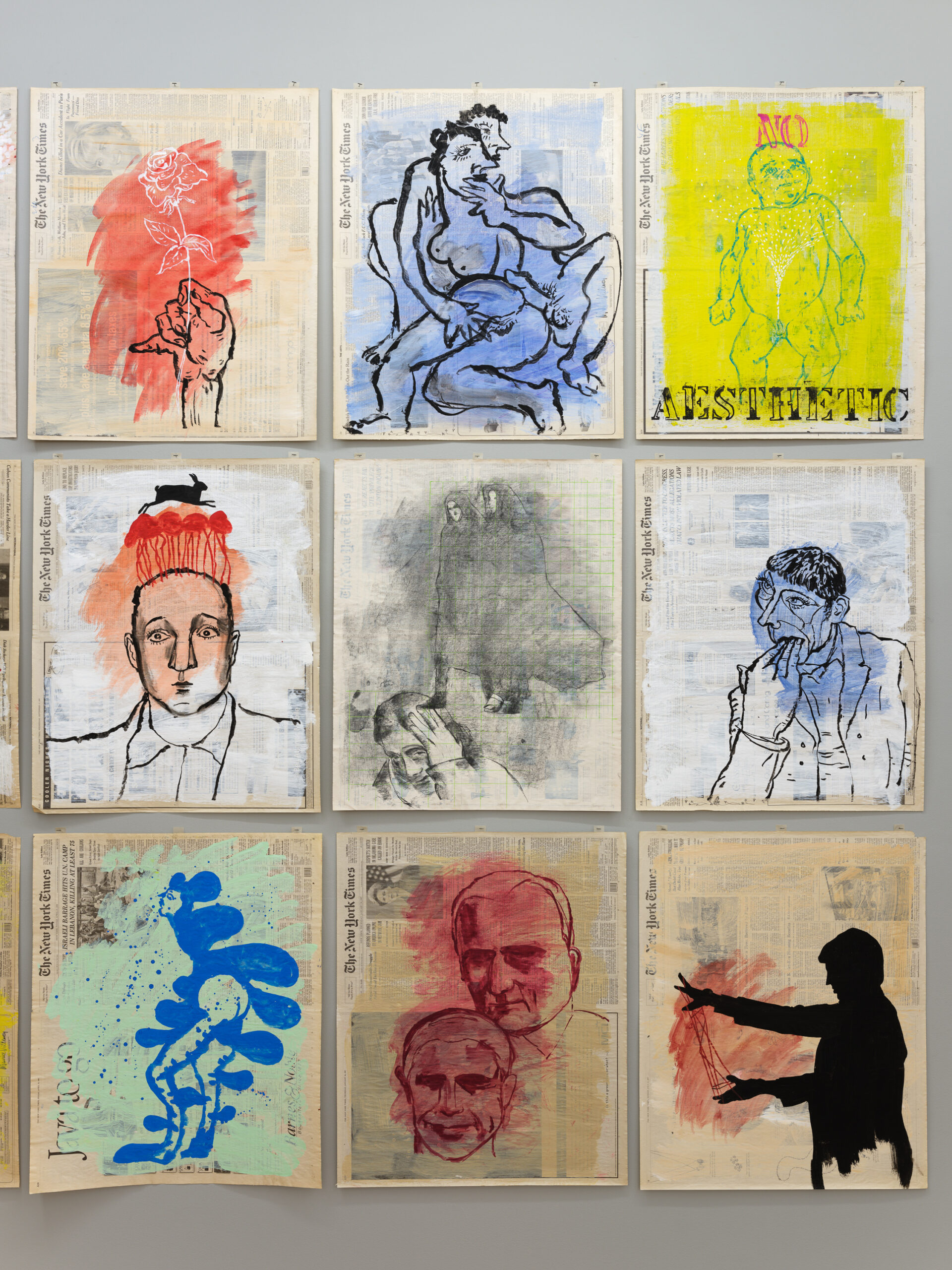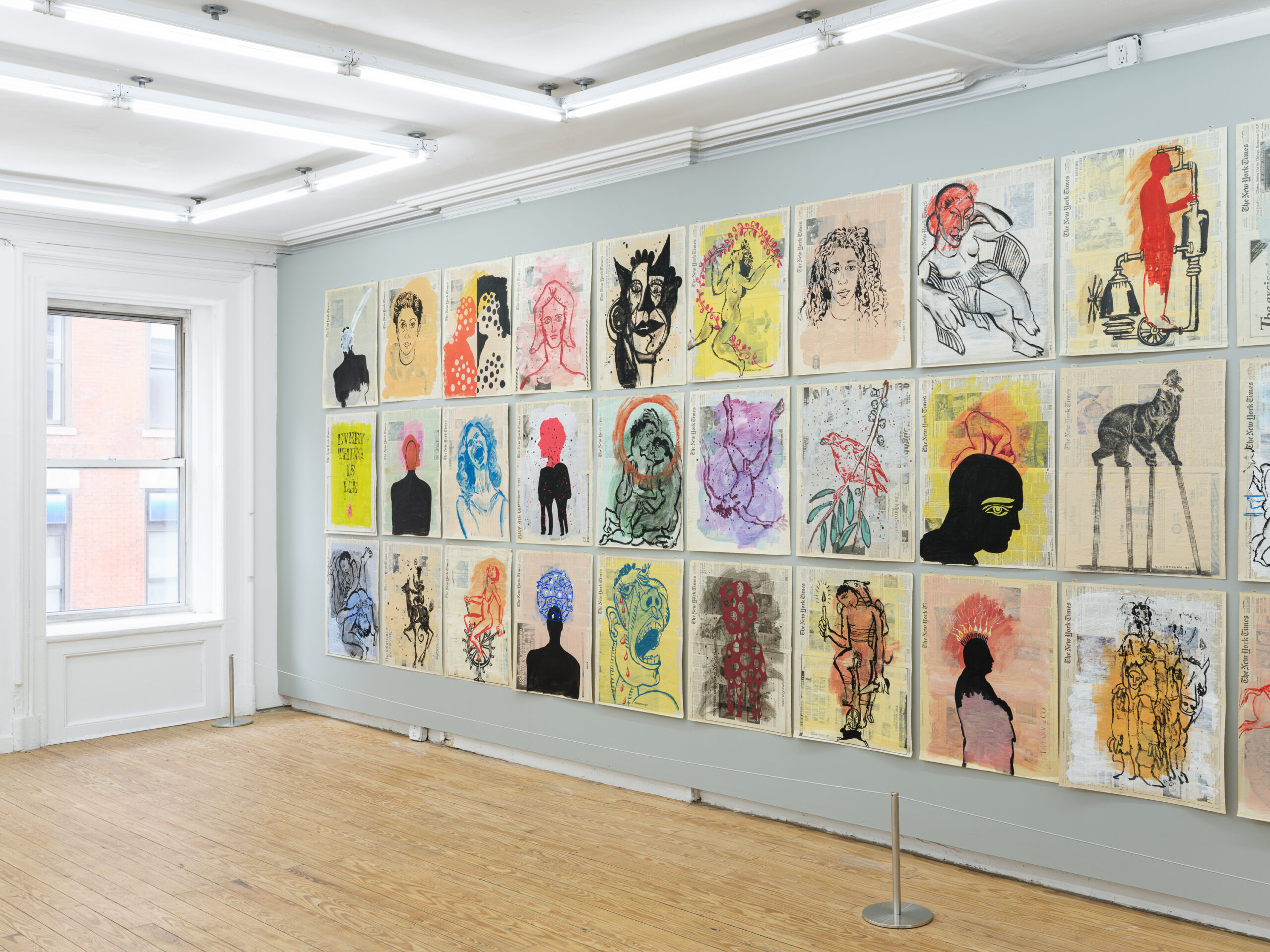21 Nov–19 Jan 2020
Nicky Nodjoumi: New York Times Sketchbooks (1996–1999)
Nicky Nodjoumi
New York Times, The New Yorker, Contemporary Art Daily , Art in America, Boston Review
Helena Anrather is pleased to present Nicky Nodjoumi: New York Times Sketchbooks (1996–1999), a never-before shown body of work by Iranian American artist Nicky Nodjoumi exhibited on the twentieth anniversary of its completion.
As an MFA student at City College in the early 1970s, Nodjoumi was already exploring intersections between art and politics that would shape the contours not only of his work but of his life itself. Pushing past the conventional boundaries of painting, he took up poster design to contribute to a range of progressive causes, from anti-war protests to civil rights rallies. This expanded artistic practice merged with a commitment to direct political action, as Nodjoumi became increasingly involved in grass-roots community organizing across New York City.
After earning his degree, Nodjoumi returned home to Tehran in 1975, artistically ambitious and politically hopeful. A vocal critic of the Shah, he was harassed and interrogated on multiple occasions by the regime’s secret police. After 1979, he seemed poised to emerge as a prominent artistic voice of the revolution, and a major exhibition of his work was organized at the Tehran Museum of Contemporary Art in 1981. Rather than blindly support the revolutionary ideology, however, Nodjoumi continued to speak truth to power: he filled the museum with paintings excoriating the hypocrisies of Iran’s new religious autocracy, which the artist felt were in some ways as troubling as that of the previous secular regime. A day after the exhibition opened, the Revolutionary Guard closed the museum, and Nodjoumi immediately fled to America.
Although he has spent the last four decades working in New York, Nodjoumi is now celebrated internationally as one of Iran’s greatest living artists, renowned for monumental tableaus that weave haunting allegories of politics, power, and history. Yet this success has been hard-won. While Nodjoumi’s commitment to painting never wavered, his circumstances did not always allow him to pursue the medium in its traditional forms. In 1996, finding himself short of money materials and unable to use oils or solvents because he worked in the same loft he shared with his wife and daughter, Nodjoumi began painting on the front page of the newspaper he read every day—The New York Times. Unable to travel as a political exile without a passport, the artist relied on the Times as inspiration for his work and as his window onto the world.
For three years, Nodjoumi painted on the front page of the Times every day, developing a diaristic practice that was equally a forum for aesthetic experimentation, an exploration of his inner life, and a meditation on world-historical events in real time. Throughout his career, Nodjoumi has drawn on contemporary political events and news media photos for the characters that populate his painted tableaus. Here his relationship to his source material is inverted; headlines and news photos constitute the ghostly ground of these works, inflecting and amplifying their painted imagery in uncanny and unexpected ways. A single, languid flower on the day after Princess Diana died; a tender portrait of his daughter on the day Netanyahu and Arafat meet; a ghostly Qajar warrior pursues a fleeing woman across reports of a moderate candidate’s victory in a presidential election in Iran. Together, the sixty-three works on view offer a powerful and sometimes painfully acute reaffirmation of an urgent cry from Nodjoumi’s student days: then as now, the personal is political.
Nicky Nodjoumi (Kermanshah, Iran, 1942) has exhibited extensively worldwide. His works are in many international institutional collections, including the Metropolitan Museum of Art in New York, the British Museum in London, the Guggenheim Abu Dhabi, LACMA, LA, and the DePaul Art Museum in Chicago. In 2014, Nicky had a solo exhibition at the Cleveland Institute of Art titled The Accident. The artist lives and works in Brooklyn.
